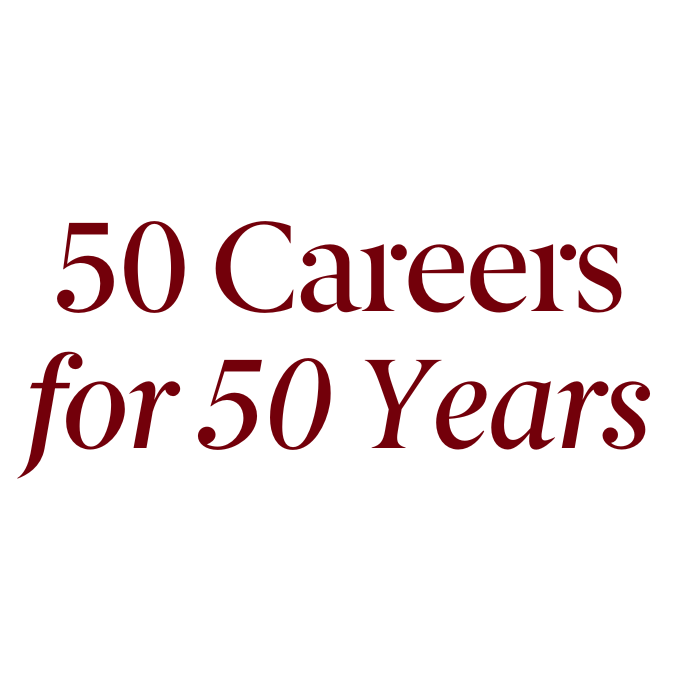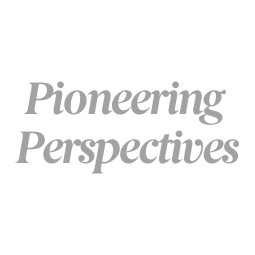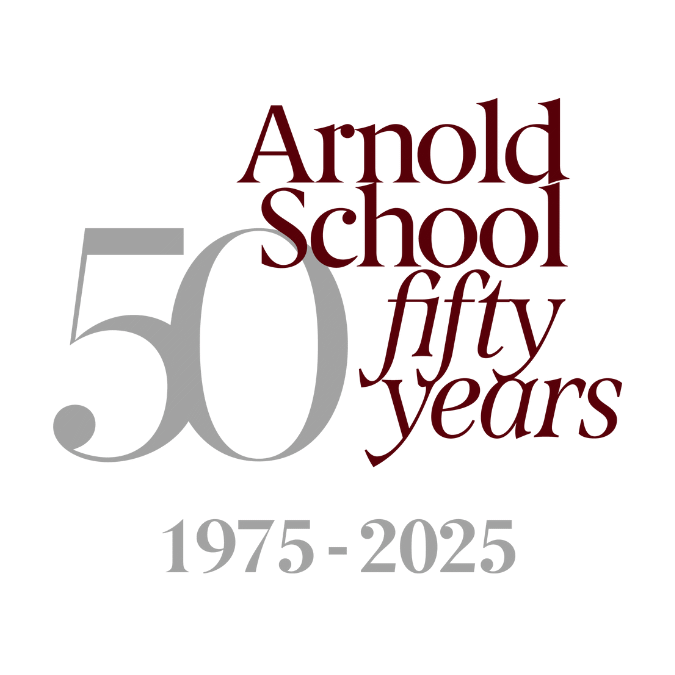
50 Careers for 50 Years
Fifty public health alumni reflect on their educational journeys and the impacts they’ve made across communities, countries, and the world.
July 22, 2025 | Erin Bluvas, bluvase@sc.edu
Russell Pate came to Carolina the same year that the state legislature and S.C. Commission on Higher Education approved the flagship university’s plans to establish a School of Public Health. With his doctoral diploma so fresh that it wasn’t yet framed, he joined the College of Health and Physical Education for his first academic appointment.
“Back then, our bachelor’s students could choose from three physical education tracks, which corresponded with three areas of focus among the faculty in the department,” Pate says. “The pedagogy track prepared students to become physical education teachers, and the motor development and exercise physiology tracks were more focused on the science of physical activity.”
Pate’s research and teaching interests fell into the exercise physiology camp, but that wasn’t always the case. His father was a PE teacher and eventually the athletic director and PE coordinator for their local school district in Hartford, Connecticut.
“I grew up in a home where movement and physical activity were part of the environment, and I thought I would follow in my dad’s footsteps for my career,” he says.
Pate did indeed study physical education in college, but his undergraduate years also introduced him to exercise physiology. One of his professors at Springfield College (Massachusetts) invited Pate to be a subject in a study he was conducting in his exercise physiology lab.
“I vividly remember thinking, this feels natural; I like this environment, and I like this work,” he says.
Pate moved across the country to earn master’s and doctoral degrees in the field at the University of Oregon, which he did – minus the two years he was drafted by the U.S. Army to serve during the Vietnam War. Not only was the University of Oregon one of the most well-recognized exercise physiology programs at the time, but it was also a national hub for distance running. Pate himself was a competitive runner, a lifelong passion that led him to compete in more than 30 marathons, including three U.S. Olympic Trials marathons and two Top 10 finisher races in the Boston Marathon, as well as lead the Carolina Marathon Association for more than 30 years.
His 1974 arrival at USC not only aligned with the impending launch of the School of Public Health (which would be named for Norman J. Arnold in 2000), it was also when the university began preparing to open the doors of the state’s second medical school. These key decisions reflected the growing awareness of state policy makers and health care leaders that South Carolina had significant health challenges and needed to make proactive moves to prioritize individual and public health.
This changing landscape continued its progression into the 80s, and the end of that decade presented a compelling opportunity for some of the physical education faculty who were heavily focused on the science of motor development and exercise physiology. Winona Vernberg had been Dean of the School of Public Health for several years by that point. Seeing the overlapping synergy of these researchers with members of her own school, Vernberg invited interested faculty to join them.
It was 1989 when the Department of Exercise Science was formed by six faculty members: Russell Pate, Bruce McClenaghan, Harriet Williams, Larry Durstine, Mark Davis, and Dianne Ward, with Pate stepping up to serve as the inaugural chair. The school was already home to four departments, which we today know as Epidemiology and Biostatistics, Environmental Health Sciences, Health Promotion, Education, and Behavior, and Health Services Policy and Management. The Department of Communication Sciences and Disorders (COMD) would also join the school that same year – completing the group of six we’ve had for the past 36 years.
“Dean Vernberg’s decision to bring the exercise science and COMD disciplines into a school of public health was a substantial departure from the norm at the time,” Pate says. “But over time, this changed, and we went from being an outlier to a pioneer in how we were structured as other universities followed suit. I give Dr. Vernberg a lot of credit for her vision and for making a progressive, forward-leaning decision.”
The exercise science department began with 70 undergraduate and 30 graduate students, and a very small operating budget. Today they are home to over 1,100 undergraduates, nearly a hundred graduate students, and more than 40 faculty. They offer eight programs of study, including degrees in two additional areas: physical therapy (established in 2004) and athletic training, which moved over from the College of Education in 2016.
“Being a part of a school of public health put us in a very advantageous position with respect to national efforts to establish physical activity as a credible focus on public health,” says Pate, who points out that while nutrition was already a major area of concentration for the field, physical activity was not.
Nutrition had long been a topic of the broader public health conversation – largely due to the significant interest by numerous stakeholders, including the food industry. In fact, the Dietary Guidelines for Americans have been around since 1980; the Physical Activity Guidelines for Americans, which Pate helped develop and update, were only released in 2008 – lagging behind nutrition by nearly three decades.
Regardless of the field’s struggle to gain widespread attention, universities like USC were making major strides in increasing its visibility by attracting more students to its study and more funding for its research and applications.
“We were in a unique position nationally as leaders of both academic public health and the broader field of public health,” Pate says.
Inside the department, the faculty began restructuring the bachelor’s and master’s programs with a focus on basic science in response to substantial student interest in clinical exercise physiology. The motor development track provided a strong foundation for students interested in professional programs such as physical therapy and occupational therapy.
After a few years, McClenaghan proposed that the department develop a physical therapy program, which marked its 20th anniversary in 2024. Once again, they had Vernberg’s support. And once again, they were ahead of national trends. Most physical therapists were being trained at the master’s level, but the exercise science department – looking to differentiate itself – chose to offer a terminal degree.
Other students were interested in pursuing master’s and Ph.D. studies in the field. Early on in the department’s tenure, the faculty developed two popular master’s programs: an M.S. in Exercise Physiology and an M.S. in Motor Development. Meanwhile, many of USC’s peer institutions were still labeling their programs as master’s in physical education.
“This curriculum design and marketing strategy gave us a jump start with our master’s programs because we were some of the first to offer these types of degrees and use this terminology,” Pate says. “After several years of attracting unbelievable cohorts to our master’s programs, it was clear we needed to offer a Ph.D. program as well.”
The exercise science department, whose growth and success had enabled them to recruit and support top-ranked faculty and promising early-career scientists, carefully designed the Ph.D. program. Decades later, it continues to be one of the best in the nation.
“We adopted a culture that expected a high level of research productivity but also provided the time and support that made it realistic for people to develop these types of programs,” Pate says.

Fifty years into his career at USC, Pate is the perfect example of how the right environment can nurture the potential and impact of both individuals and teams. Early on in his career, the marathoner was most interested in traditional human exercise physiology, specifically endurance performance. Not long after he arrived at Carolina, however, he had the opportunity contribute to the ongoing debate of how to best measure kids’ physical fitness at school – thus, adding a second, quite different, area of interest to his research agenda.
After a decade of dividing his attention, Pate decided to discontinue his laboratory studies and pursue federal funding to conduct children’s physical activity research.
“This kind of research just wasn’t being done for many reasons, but some of them were the logistical and technical challenges of measuring physical activity for this population,” Pate says. “Children’s health and childhood obesity prevention weren’t part of the public health conversation yet, but it was beginning to become apparent that our nation’s youth were facing systemic and long-term health problems.”
To better prepare himself for this work, Pate took a sabbatical at the Medical College of Georgia where he spent a year in a pediatrics department working with a cardiologist who shared his concern and interest in addressing these challenges. He returned to USC and began learning how to write grants – finding support from his department as well as staff at the National Institutes of Health along the way.
“They say timing is everything,” says Pate, who has since secured over $28 million
in competitive funding to support research on children’s physical activity, trained
dozens of graduate students through his research program, and is seen as a national
thought leader in the field. “In my case, and in our case as a department, that’s
really been true. I feel fortunate to have come along at a time when the ground was
becoming more fertile for this type of work and to land – through a circuitous route
– in a school of public health that was supportive of what we were doing.”

Fifty public health alumni reflect on their educational journeys and the impacts they’ve made across communities, countries, and the world.

Each month, we're telling the stories of alumni, faculty, and leaders whose unique perspectives shed light on the Arnold School across its five-decade history.

Join us as we celebrate the school’s 50th anniversary with guest speakers, symposia, feature stories, and anniversary events for students, alumni, faculty, staff and friends.